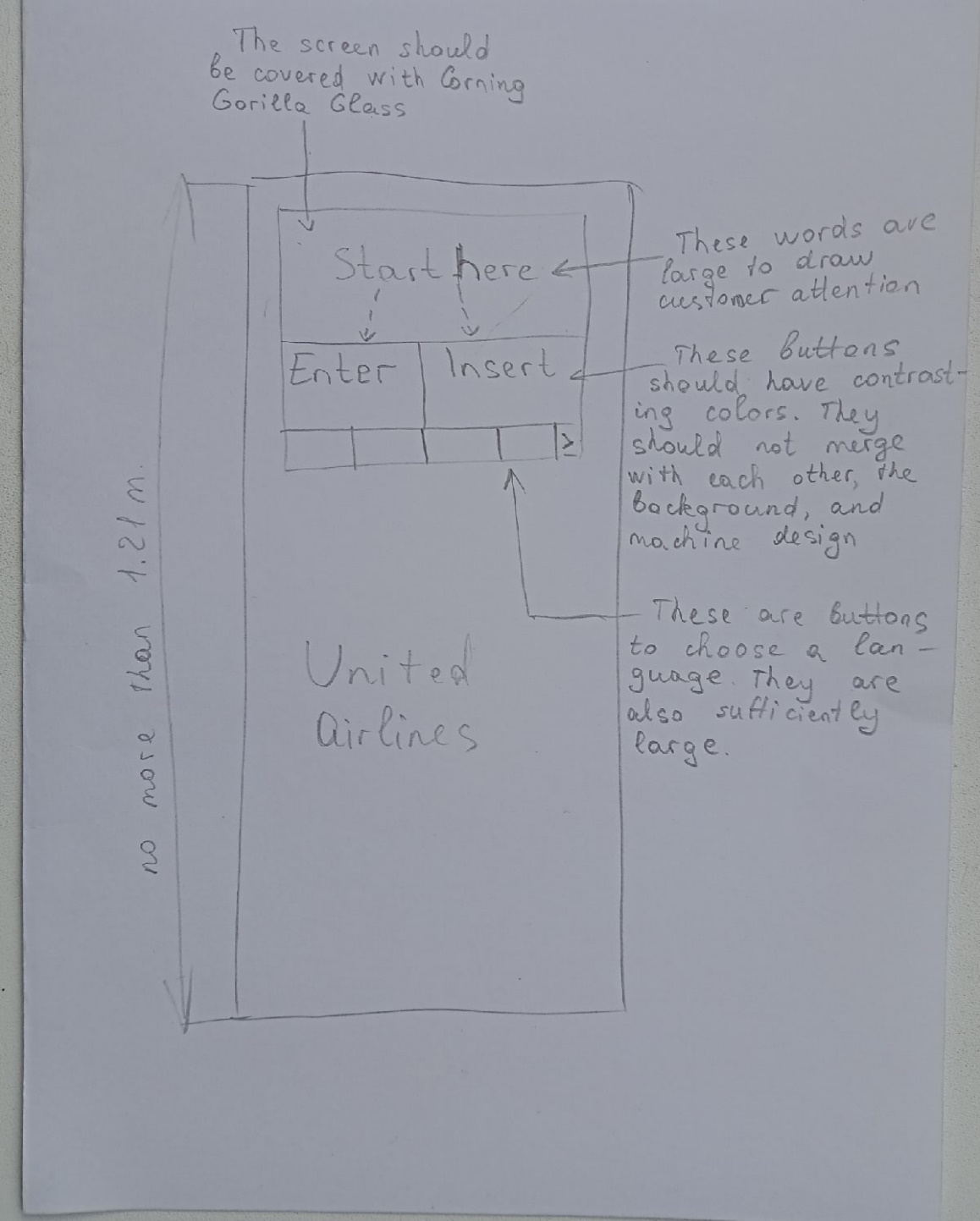Introduction
The degree to which machines are designed to adapt to human needs when they interact with the system or a device is referred to as ergonomics. The main objective of ergonomics is to increase the productivity of a machine or system. That increases the efficiency and effectiveness of its use during an operation with less human effort or strain (Matyushok et al., 2021). Many systems in the recent technological trend tend to have a paradigm shift. A task-centered design focuses on achieving the expected goal within the desired time. Simultaneously, a user-centered design aims at identifying how best the objective can be achieved using minimal human effort. A user-centered design dramatically influences the individual experience and consistency of using the product.
Today, self-service technology is highly requested because it offers many advantages. This approach led to increased profitability for firms and improved user satisfaction (Taillon & Huhmann, 2017). That is why it is not a surprise that various spheres benefit from introducing such technologies. Parking ticket machines, self-service kiosks in fast-food restaurants, and others are suitable examples. Simultaneously, the airline industry is not an exception because “over 80% of the airlines around the world have focused on applying self-service technology” (Gures et al., 2018, p. 215). The rationale behind the use of these systems refers to the fact that passengers can save time dealing with document scanning, self-check-in, and others (Lien et al., 2021). Thus, there is robust reasoning behind implementing self-service technologies in the aviation industry.
However, it is impossible to state that this technology is free from any possible drawbacks. Thus, Yau and Tang (2018) stipulate that the introduction of such systems results in the loss of contact between passengers and counter-service officers, which can lead to reduced satisfaction among customers. Scientific evidence also suggests that some individuals tend to avoid using self-service technologies for multiple reasons. The arguments include unwillingness to take responsibility, a lack of competence, privacy concerns, and others (Kelly et al., 2019). Simultaneously, Kelly et al. (2017) stipulate that different issues are frequent, including the failures of self-service systems and challenges in meeting customer needs. Thus, there is no doubt that self-service kiosks can result in both positive and negative outcomes. Consequently, this report analyzes a self-check-in kiosk by United Airlines, determines its advantages and drawbacks, and offers ways to overcome the identified inefficiencies.
Analysis
Appendix A presents a picture of the self-check-in kiosk under analysis. According to the United Airlines website (n.d.), individuals can use this technology for printing boarding passes, checking baggage, selecting or changing seats, finding alternative flights, and so on. Furthermore, these kiosks offer services in eleven languages and are suitable for visually impaired individuals (United Airlines, n.d.). Consequently, it is reasonable to find any drawbacks, if any, and offer a way to mitigate their effect.
The current study applies Hierarchical Task Analysis (HTA) and user trials to analyze the kiosk. The HTA implies splitting the whole cycle into smaller and independent tasks so that one can consider them in isolation (Wójcicki et al., 2018). User trials denote that the analysis presented below is based on the experiences of other people who used the device. Thus, a self-check-in kiosk is an automated and sensory device that helps individuals perform specific tasks. Its home screen offers two options, including Enter or Insert information (Appendix A). Thus, it is possible to insert a credit card, MileagePlus card, passport, boarding document, or United Club card. After clicking Enter, one should type a confirmation, MileagePlus, or eTicket number. Then, a person is provided with their travel details, including personal information, flight itinerary, selecting seats, and others.
After pressing Continue, a user is offered additional flight options (Appendix C). After choosing or not choosing any of them, a user should Accept the hazardous items disclaimer (Appendix D) and carry-on baggage policy (Appendix E). The following step will be to check bags if any (Appendix F). After that, the kiosk asks a person to present contact information and confirm it (Appendix G). Thus, a final step will be to take a printed boarding pass and leave. All these individual steps are graphically represented in the HTA that can be found in Appendix H.
Evaluation
In general, the evaluation process revealed that the kiosk under analysis was developed according to a user-centered design, but a few inefficiencies were still identified. Firstly, the user trials determined that the kiosk had a slow response rate, which made individuals press the same button several times, resulting in errors. This designer error typically leads to customer frustration and anger. Secondly, the kiosk lacks color contrast in its interface, which makes the use of the machine more challenging (Punchoojit & Hongwarittorn, 2017). This problem is especially significant for older populations because aging is associated with impaired vision (Mick et al., 2021). This information denotes that it is more challenging for these people to discern similar colors. Consequently, it is not a surprise that younger individuals are more active users of this kiosk. Thirdly, it is not reasonable that the Enter and Insert buttons from the home screen are different in size. Fourthly, older customers also admit challenges reading the text on the screen and pressing small buttons. As a result, people should spend more time reading and typing the required information, which leads to long queues and increased customer dissatisfaction.
Simultaneously, the evaluation process revealed some drawbacks regarding the physical design of the kiosk. Firstly, the user experience is compromised by screen glare and reflection, which is seen in Appendices B, C, D, E, and G. This situation occurs because various lighting sources are available in the environment. Consequently, they impact the machine screen, and users should have to find specific angles to ensure that they do not have any barriers to seeing information on the display. Simultaneously, Park et al. (2021) clarify that the presence or absence of glare on the computer screen can significantly affect employee satisfaction. That is why it is necessary to ensure that this phenomenon does not affect the self-check-in kiosk.
Secondly, a significant issue refers to the height of the kiosk. According to the American Disability Act (1990), the top of a screen of such devices should be positioned at no more than 1.21 meters. This requirement is necessary to ensure that people in wheelchairs can access and use these machines. However, it seems that United Airlines failed to meet this height standard because their kiosks appear to be taller. Even though this state of affairs is appropriate for tall people, the violation of the American Disability Act (1990) requirement is not a positive point. That is why it is necessary to offer specific recommendations on how to overcome the identified drawbacks.
Recommendations
The first group of recommendations refers to the physical design of the self-check-in kiosk under analysis. On the one hand, it is necessary to ensure that the device meets the height requirements made by the American Disability Act (1990). Since it has been mentioned that the machine appears to be taller, it is reasonable to redesign it to make sure that the reduction of the length will not hurt the device’s functionality. On the other hand, the use of Corning Gorilla glass reduces the amount of glare and reflection because this material leads to a greater viewing angle (Li et al., 2018). This step will help ensure that no barriers prevent users from viewing the screen details.
The second group of recommendations refers to improving the ergonomics of the design on screen. Thus, it is necessary to use contrast colors, invest in downloading more effective software, have a quick response time, and apply larger and symmetric buttons. These steps seem to be sufficient to improve the design of the self-check-in kiosk by United Airlines. Appendix I offers a version of an improved design for the home screen that is found in Appendix A.
Conclusion
Ergonomics is a diverse activity that encompasses various disciplines: scientific and professional. This sphere is concerned with physical science, psychology, engineering, and management. This report has analyzed and evaluated the design of the self-check-in kiosk by United Airlines. Even though the machine has some features of user-centered design, a few inefficiencies were identified. In particular, the decreased visibility of the screen details, inappropriate height, and screen glare is among them. They can be mitigated by relying on recommendations that include adjusting the height, using Corning Gorilla Glass, applying contrast colors, and using larger buttons to ensure that people with impaired vision can use the machine. Appendix I offers a graphical representation of how these recommendations can be implemented. It is reasonable to expect that these steps can improve the design, which will positively affect user experience and satisfaction from dealing with the self-check-in kiosk.
References
American Disability Act. (1990). National network: Information, guidance, and training on the Americans with Disabilities Act.
Gures, N., Inan, H., & Arslan, S. (2018). Assessing the self-service technology usage of Y-Generation in airline services.Journal of Air Transport Management, 71, 215-219.
Kelly, P., Lawlor, J., & Mulvey, M. (2017). Self-service technologies: Services failures and recovery. In E. Koc (Ed.), Service failures and recovery in tourism and hospitality: A practical manual (pp. 100-121). CABI.
Kelly, P., Lawlor, J., & Mulvey, M. (2019). Self-service technologies in the travel, tourism, and hospitality sectors: Principles and practice. In S. Ivanov & C. Webster (Eds.), Robots, artificial intelligence, and service automation in travel, tourism, and hospitality (pp. 57-78). Emerald Publishing Limited.
Li, C.-C., Lesuffleur, A., Oudard, J. F., & Ishikawa, T. (2018). P-37: Wide-viewing-angle anti-reflection and anti-glare surface treatment of the cover glass for auto-interior applications. Book 3: Automotive/Vehicular Displays and HMI Technologies Posters, 49(1), 1336-1338.
Lien, C.-H., Hsu, M. K., Shang, J.-Z., & Wang, S. W. (2021). Self-service technology adoption by air passengers: A case study of fast air travel services in Taiwan.The Service Industries Journal, 41(9-10), 671-695.
Matyushok, V., Krasavina, V., Berezin, A., & García, J. S. (2021). The global economy in technological transformation conditions: A review of modern trends. Economic Research-Ekonomska Istraživanja, 34(1), 1471-1497. Web.
Mick, P. T., Hamalainen, A., Kolisang, L., Pichora-Fuller, M. K., Phillips, N., Guthrie, D., & Wittich, W. (2021). The prevalence of hearing, vision, and dual sensory loss in older Canadians: An analysis of data from the Candian longitudinal study on aging.Canadian Journal on Aging, 40(1), 1-22.
Park, J., Loftness, V., Aziz, A., & Wang, T.-H. (2021). Strategies to achieve optimum visual quality for maximum occupant satisfaction: Field study findings in office buildings.Building and Environment, 195, 107458.
Punchoojit, L., & Hongwarittorn, N. (2017). Usability studies on mobile user interface design patterns: A systematic literature review. Advances in Human-Computer Interaction.
Taillon, B. J., & Hahmann, B. A. (2017). Strategic consequences of self-servie technology evaluations. Journal of Strategic Marketing, 1-12.
United Airlines. (n.d.). Airport kiosks.
Wójcicki, J., Bianchi, G., & Tolio, T. (2018). Hierarchical modelling framework for machine tool energy optimization.Journal Of Cleaner Production, 204, 1044-1059.
Yau, H. K., & Tang, H. Y. H. (2018). Analyzing customer satisfaction in self-service technology adoptied in airports. Journal of Marketing Analytics, 6, 6-18.
Appendices
Appendix A
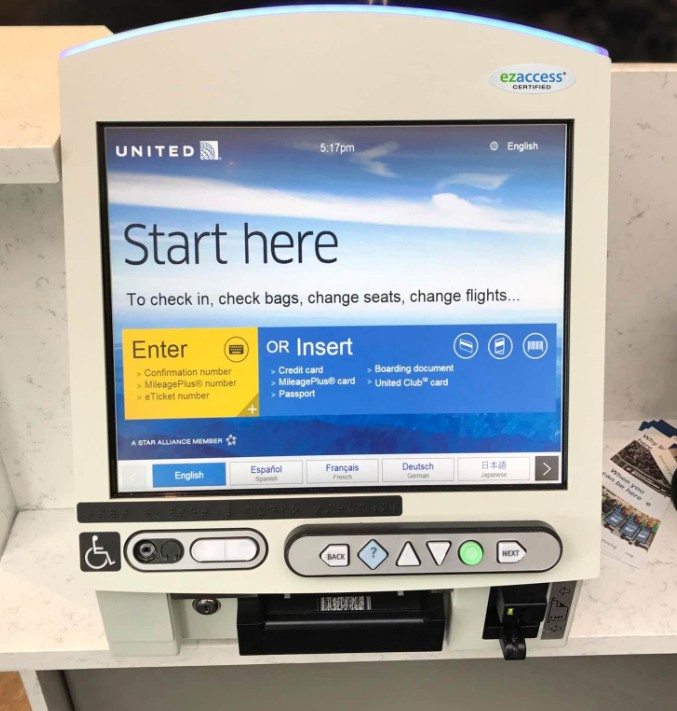
Appendix B
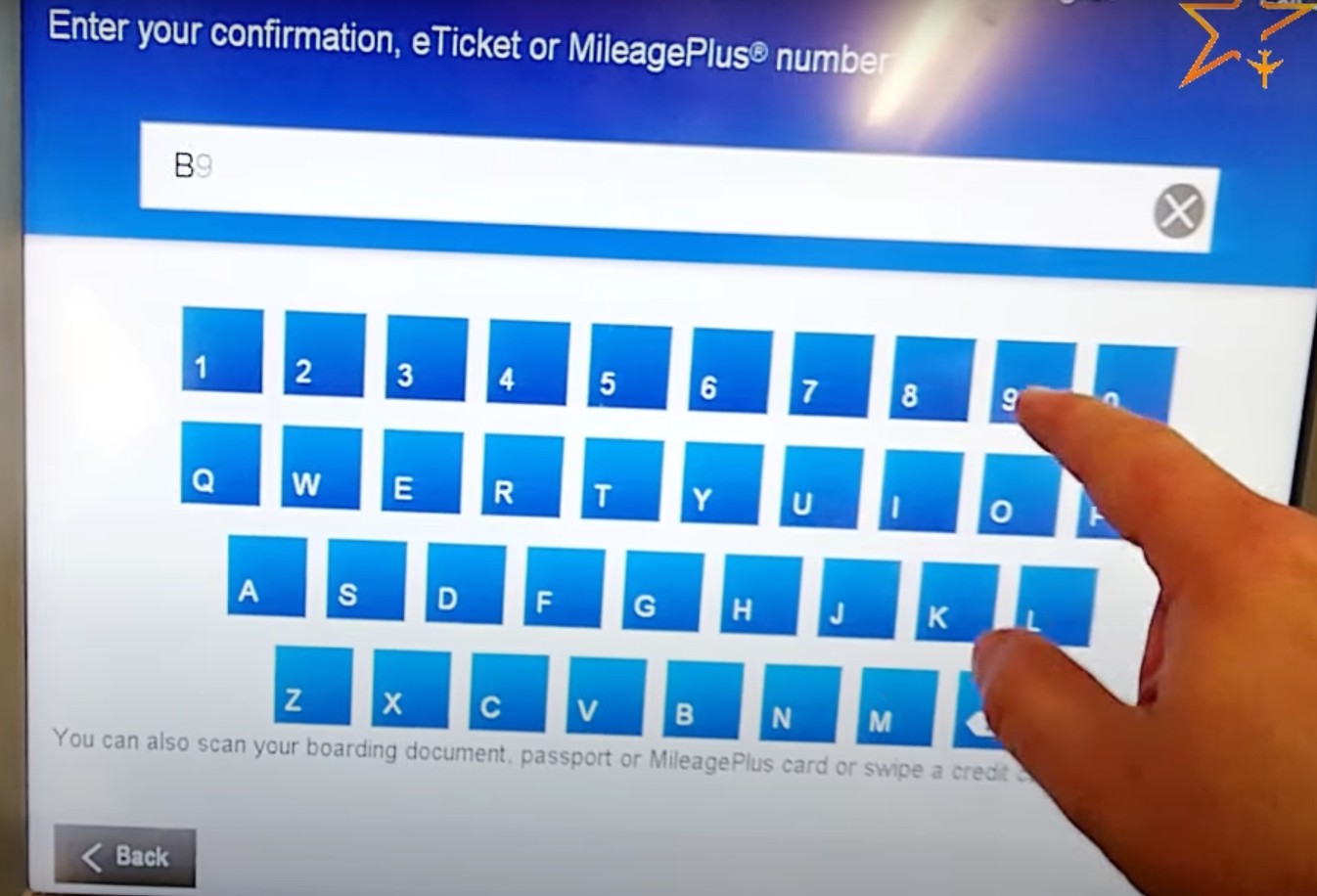
Appendix C
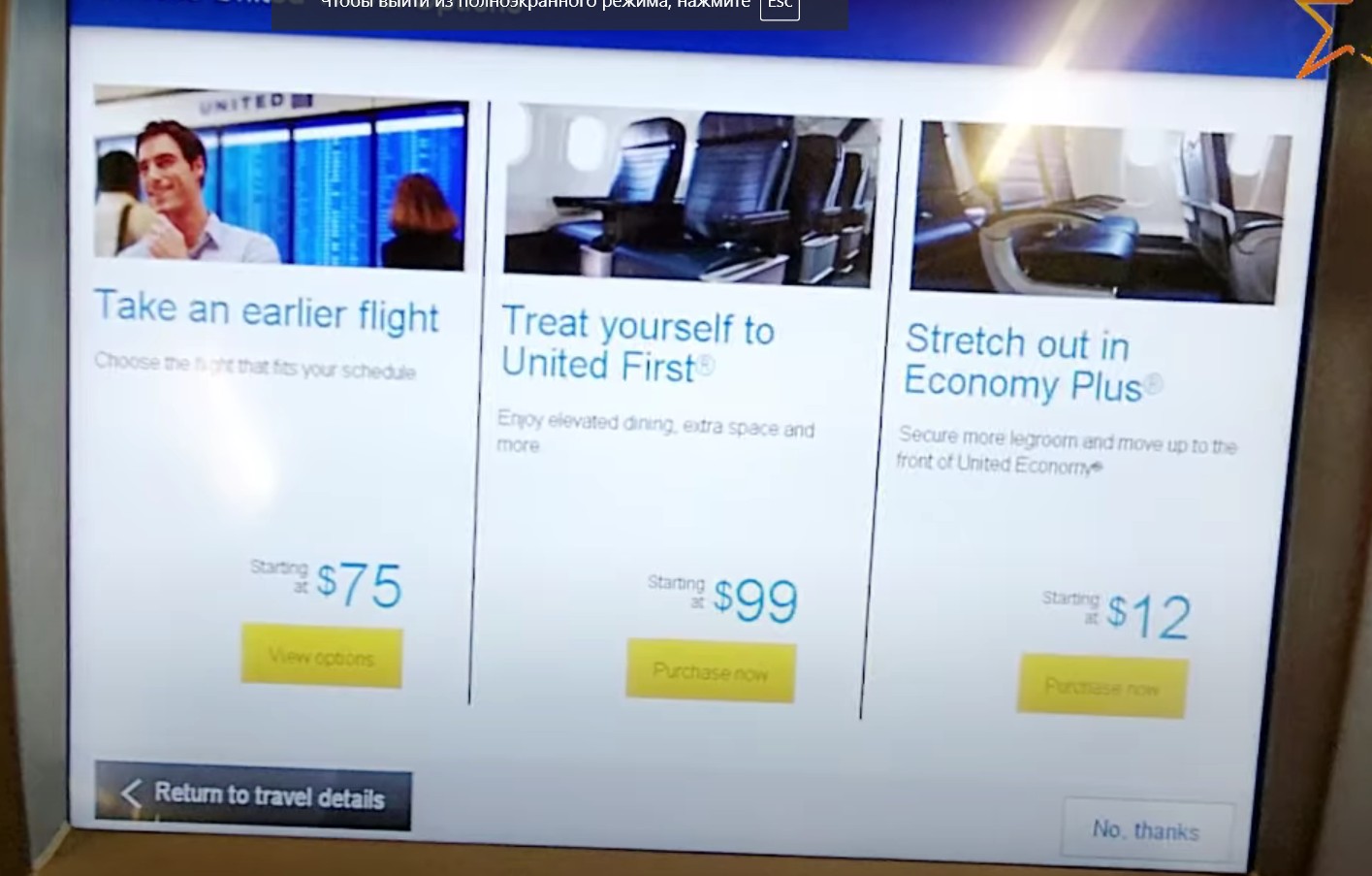
Appendix D
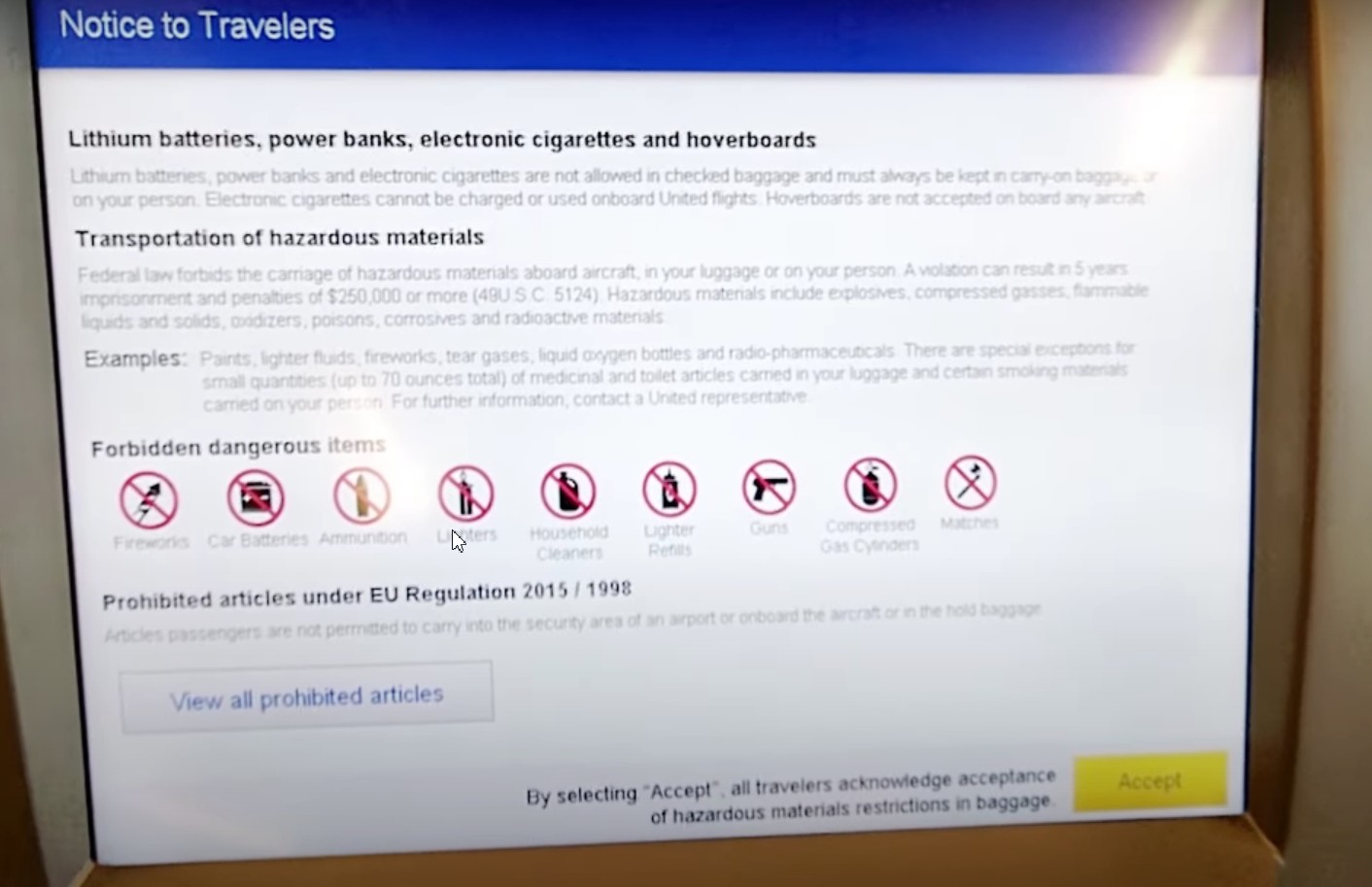
Appendix E
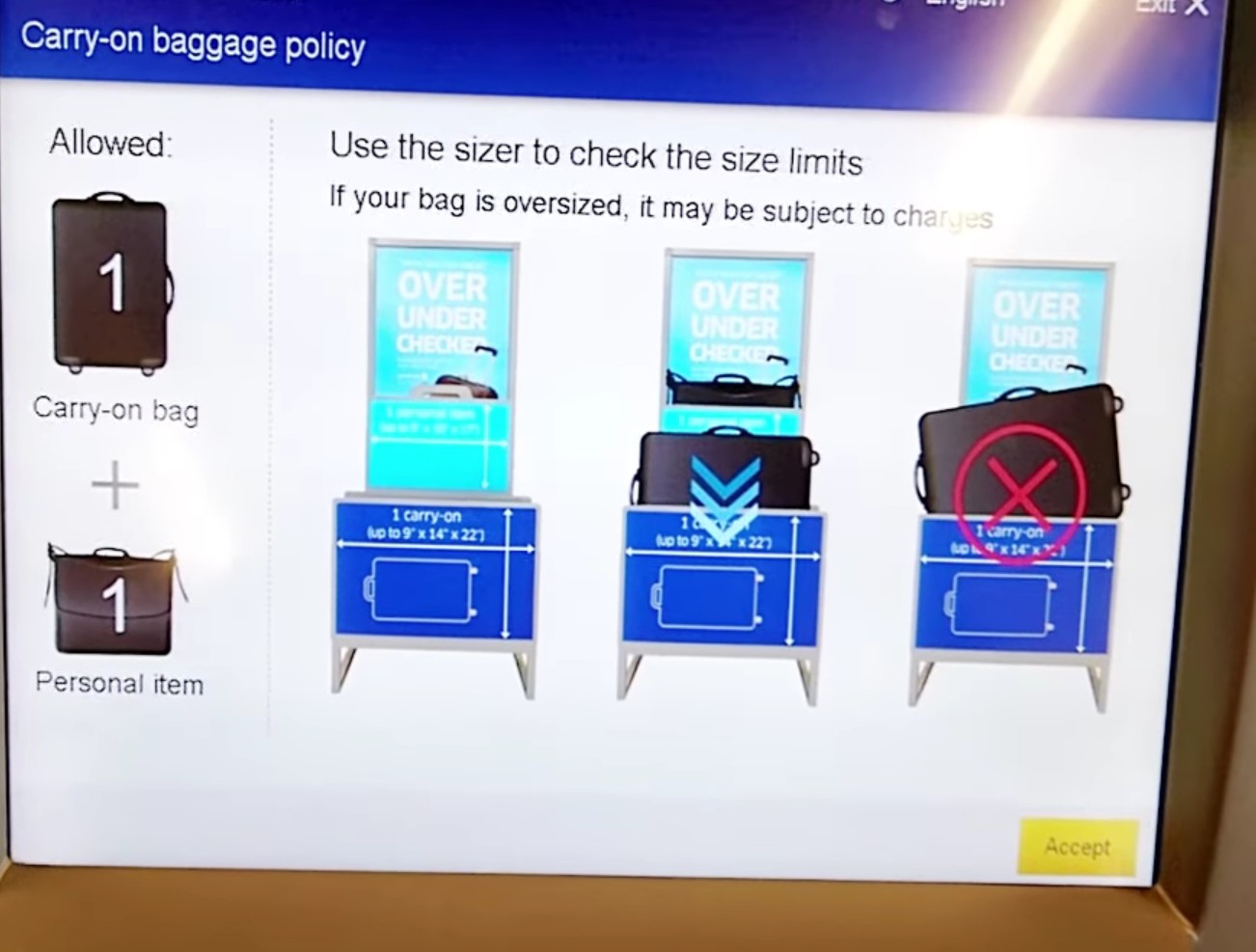
Appendix F
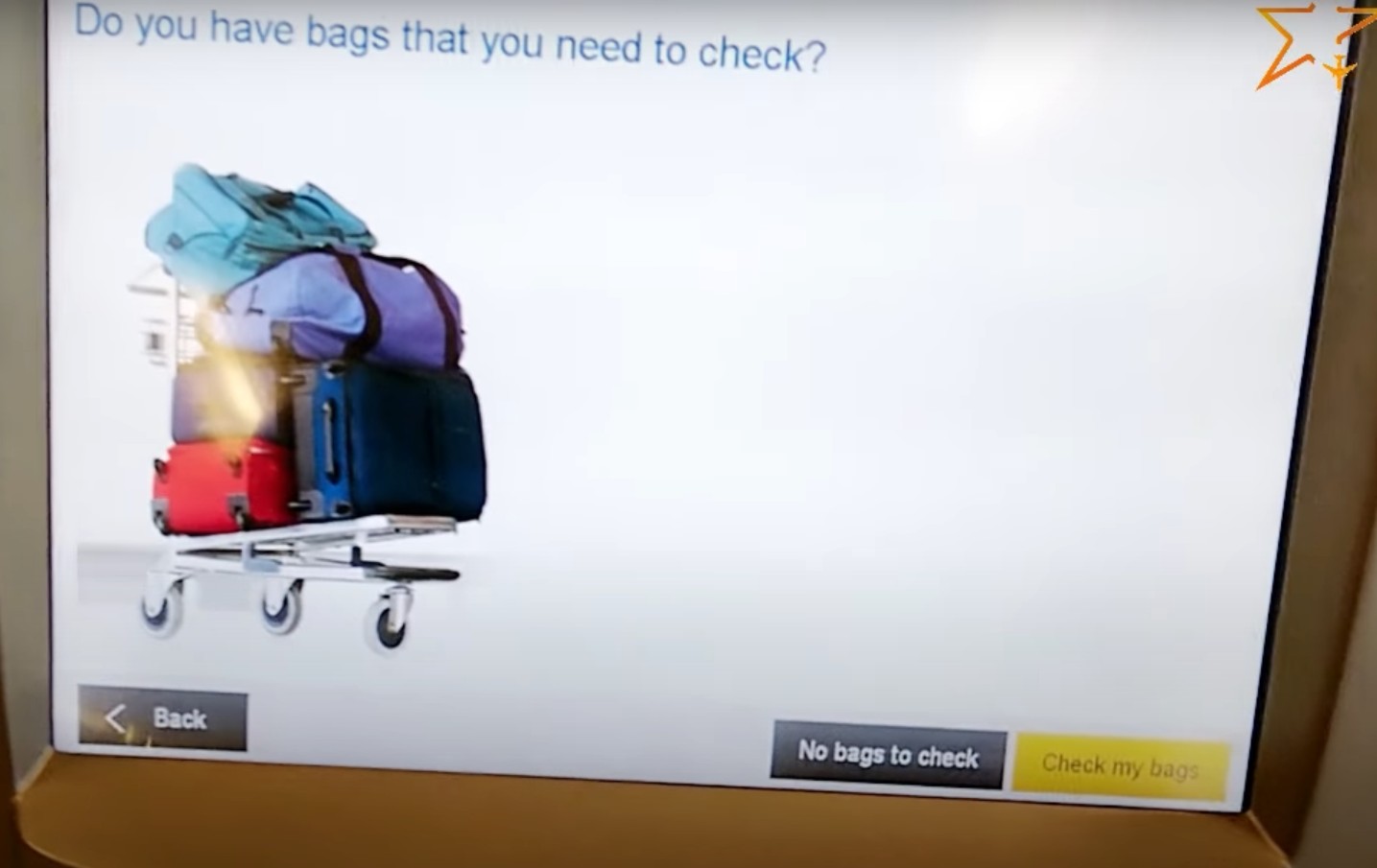
Appendix G
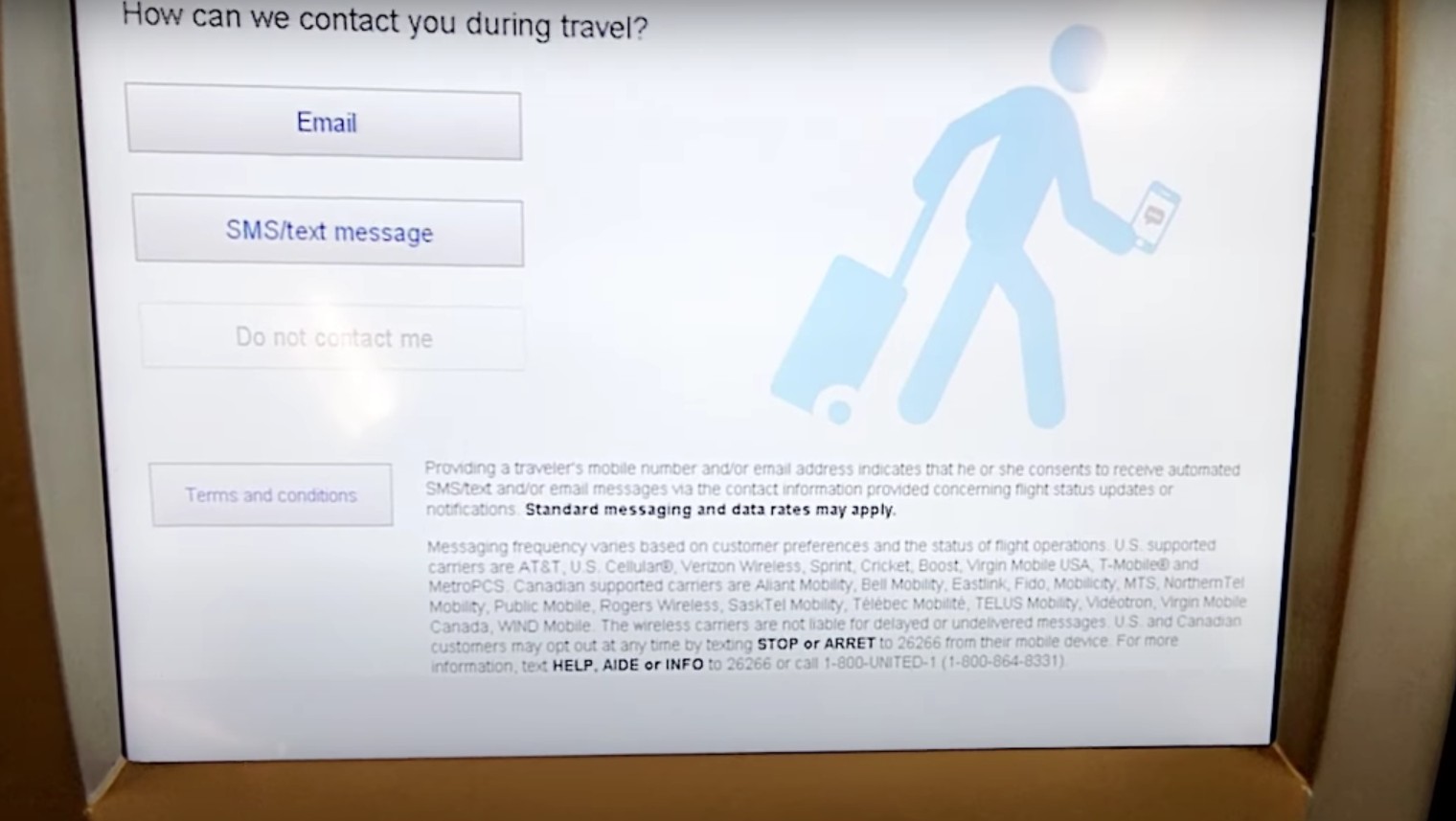
Appendix H
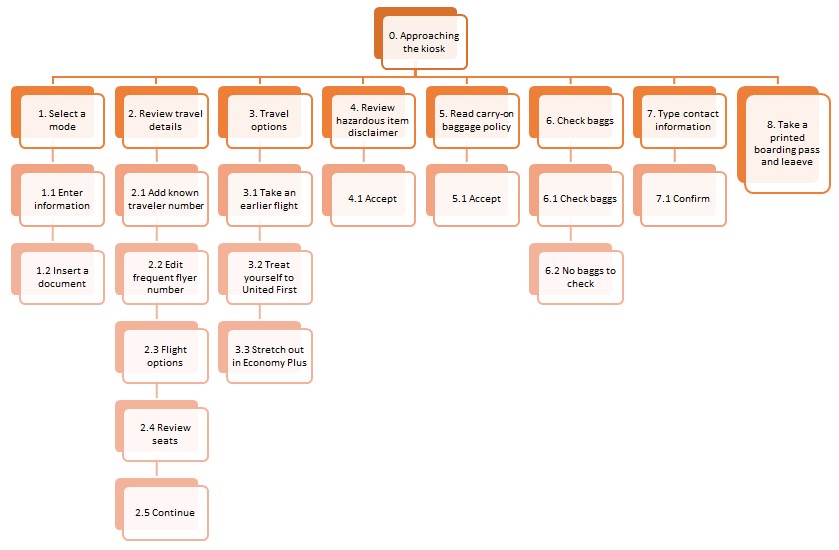
Appendix I
